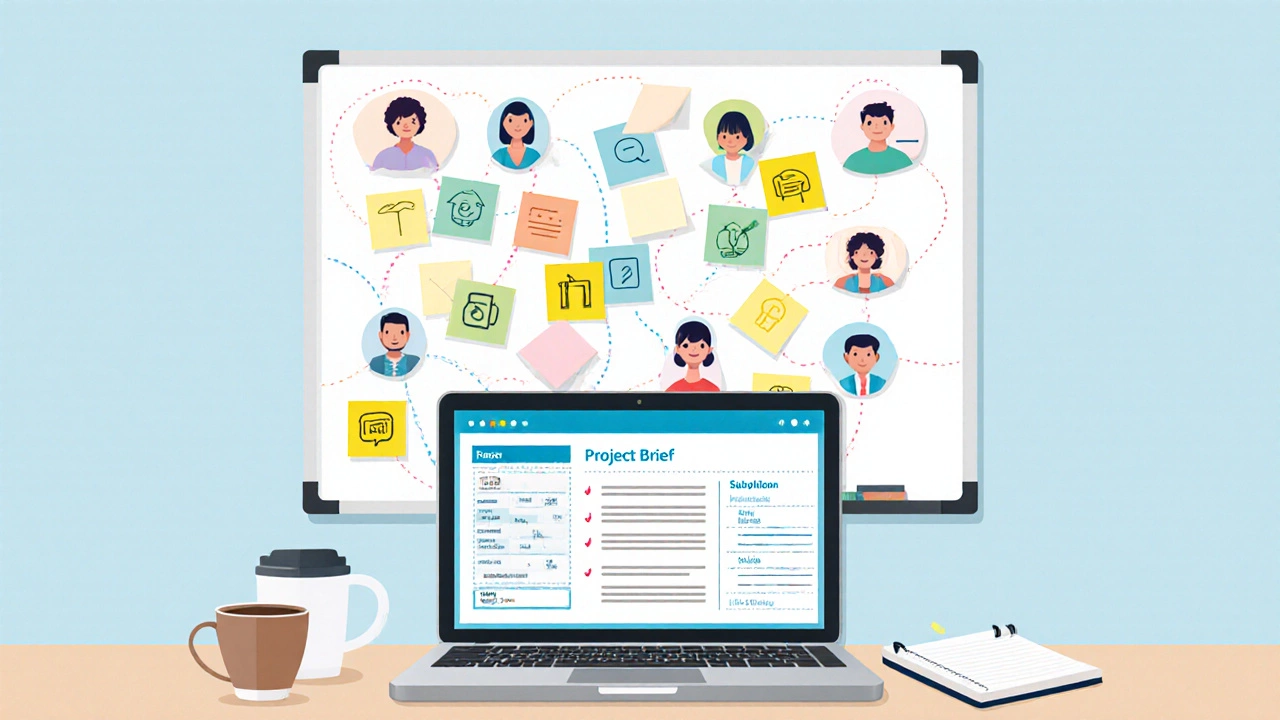eLearning Platform Planning Tool
Define Your Platform
Recommended Platform Components
Quick Summary
- Define your learners, niche, and business model before choosing any tool.
- Pick a Learning Management System (LMS) that matches your technical skill and budget.
- Use modern web tech (HTML5, responsive design, CDN) to keep courses fast on any device.
- Integrate a payment gateway and follow GDPR/PCI rules for secure transactions.
- Launch with a beta group, collect feedback, then scale on a cloud host.
When you hear the phrase online eLearning platform is a digital hub where creators upload courses, learners enroll, and interactions happen through video, quizzes, and forums, you probably picture a big corporate website. In reality, you can launch a solid platform on a shoestring budget if you follow a clear roadmap. This guide walks you through every decision point, from picking the right LMS to keeping your site secure and compliant in 2025.
1. Map Your Vision - Who, What, and How
Before any code, answer three questions:
- Who is your target audience? (high‑school students, corporate trainees, hobbyists?)
- What type of content will you deliver? (video lectures, live webinars, interactive labs?)
- How will you earn money? (subscription, one‑time payment, freemium, corporate licensing?)
Write those answers down as a one‑page “project brief”. It becomes the north star when you later compare tools or negotiate contracts.
2. Core Building Blocks
Every successful eLearning platform rests on four pillars:
- Learning Management System (LMS) - manages users, courses, progress, and assessments.
- Content Delivery Network (CDN) - speeds up video and asset loading worldwide.
- Payment & Membership Engine - handles subscriptions, coupons, and receipts.
- Compliance & Security Layer - protects data and meets GDPR, PCI DSS, and accessibility standards.
We’ll dive into each pillar and show you practical choices.
3. Choosing the Right LMS
The LMS is the heart of your platform. It should support SCORM, have API access, and let you brand the UI. Below is a quick comparison of the most popular SaaS and open‑source options in 2025.
| Platform | Pricing | Hosting | Customization | Best For |
|---|---|---|---|---|
| Moodle - open‑source LMS with robust plugin ecosystem | Free core; $0‑$150/mo for managed hosting | Self‑hosted or cloud partner (AWS, Azure) | High - PHP plugins, theming, API | Institutions, tech‑savvy creators |
| Teachable - SaaS platform focused on creators | $39‑$299/mo (transaction fees optional) | Hosted by Teachable | Medium - limited CSS, built‑in landing pages | Individual coaches, small businesses |
| Thinkific - SaaS LMS with strong community features | $0‑$499/mo | Hosted by Thinkific | Medium - drag‑and‑drop builder, custom domains | Course creators who need community forums |
| Kajabi - All‑in‑one marketing + LMS | $149‑$399/mo | Hosted by Kajabi | Low - highly opinionated templates | Entrepreneurs who want built‑in email funnels |
If you have a developer team, Moodle gives you the most freedom. If you prefer a hands‑off approach, Teachable or Thinkific let you launch in a weekend.
4. Tech Stack Essentials
Beyond the LMS, the underlying tech determines speed and reliability.
- Video Hosting: Use a service that supports adaptive streaming (e.g., Vimeo OTT or AWS Elemental). It reduces bandwidth costs and guarantees playback on mobile.
- Content Delivery Network (CDN): Cloudflare - global CDN that caches static assets and protects against DDoS is a popular choice. Set it up to cache your course thumbnails, CSS, and JS files.
- Server Environment: For SaaS LMS you’re covered. For self‑hosted options, spin up an AWS EC2 - elastic compute instance with hourly billing behind an Elastic Load Balancer to handle spikes during enrollment periods.
- Authentication: Implement OAuth 2.0 or Social Login (Google, Facebook). It speeds up sign‑ups and reduces password fatigue.
All these pieces talk to each other via RESTful APIs. Make sure your LMS offers webhook support so you can sync enrollments with a CRM like HubSpot.
5. Designing Engaging Course Material
Even the flashiest platform fails if the learning experience is bland. Follow these production tips:
- Scripting first: Write a storyboard with learning objectives, then record in 1080p or 4K. Use a lapel mic for clear audio.
- Chunk content: Keep videos under 10 minutes. Insert knowledge checks using SCORM - a standard that lets you embed quizzes and track scores compatible with most LMSs.
- Interactive elements: Add drag‑and‑drop activities, discussion boards, and peer‑review assignments to boost retention.
- Accessibility: Include captions, transcripts, and ARIA labels. This not only meets legal requirements but also widens your audience.
Store raw assets in an organized bucket (e.g., AWS S3 - object storage service for media files) and serve them through the CDN for instant playback.

6. Monetization & Payment Integration
Pick a revenue model early; it influences pricing pages and checkout flow.
- Subscription: Recurring monthly or annual plans. Works well with SaaS LMS that provide built‑in billing.
- One‑time purchase: Ideal for certification courses. Offer bulk discounts using coupon codes.
- Freemium + Upsell: Free starter modules, then charge for advanced tracks.
Partner with a payment gateway - service that processes credit cards, Apple Pay, and regional payment methods like Stripe or Razorpay. Ensure PCI‑DSS compliance; most gateways handle the heavy lifting, but you still need TLS1.2+ on your site.
7. Security, Privacy, and Legal Compliance
Data breaches can kill trust overnight. Follow this checklist:
- Encrypt at rest and in transit: Use HTTPS everywhere and enable server‑side encryption for databases.
- GDPR compliance: If you collect EU data, appoint a Data Protection Officer, provide a clear privacy policy, and enable right‑to‑be‑forgotten requests.
- Regular backups: Schedule daily snapshots on AWS S3 with versioning turned on.
- Access controls: Apply role‑based permissions in the LMS (student, instructor, admin).
- Vulnerability scanning: Run quarterly scans with tools like Qualys or open‑source OWASP ZAP.
Remember, the GDPR - EU regulation that governs personal data handling is not optional if you have any EU learners.
8. Launch Checklist & Ongoing Management
Before you hit ‘Publish’, run through this ten‑step sanity check:
- Beta test with 20‑30 real users; collect Net Promoter Score (NPS).
- Confirm video playback on mobile, tablet, and desktop.
- Validate checkout flow: discount codes, tax calculation, receipt email.
- Check analytics integration (Google Analytics 4 + LMS event tracking).
- Review GDPR consent banners and cookie policy.
- Enable automated backups and test restore procedure.
- Set up monitoring alerts for server CPU, latency, and payment failures.
- Publish a launch blog post and schedule email sequence.
- Prepare a support FAQ and a dedicated help‑desk email.
- Plan a post‑launch review after 30 days to iterate.
After launch, keep the platform fresh: add new modules, update quizzes, and run quarterly webinars to keep learners engaged.
Frequently Asked Questions
Do I need to code to start an eLearning platform?
No. SaaS LMSs like Teachable or Thinkific let you build a full‑featured site using drag‑and‑drop tools. If you want deep customization, a bit of PHP or JavaScript for Moodle will be enough.
Which LMS works best for a niche hobby course?
Thinkific is a solid pick: it supports custom domains, offers a built‑in community board, and has affordable plans for low‑volume creators.
How much does video hosting cost?
Vimeo OTT starts at $199/month plus a $0.10/GB streaming fee. AWS Elemental pricing is usage‑based and can be cheaper for very high traffic, but requires more setup.
Is GDPR compliance expensive?
The main costs are legal review and implementing consent banners. Technical compliance (encryption, data‑subject requests) can be handled with existing cloud tools at minimal extra cost.
What’s the fastest way to get my first paying student?
Launch a mini‑course for free, capture email leads, then run a limited‑time discount for the full program. Email nurture + a live Q&A works well for conversions.
Building an online eLearning platform isn’t a mystery. With a clear vision, the right LMS, a solid tech stack, and attention to security, you can go from idea to a revenue‑generating site in weeks, not months.
